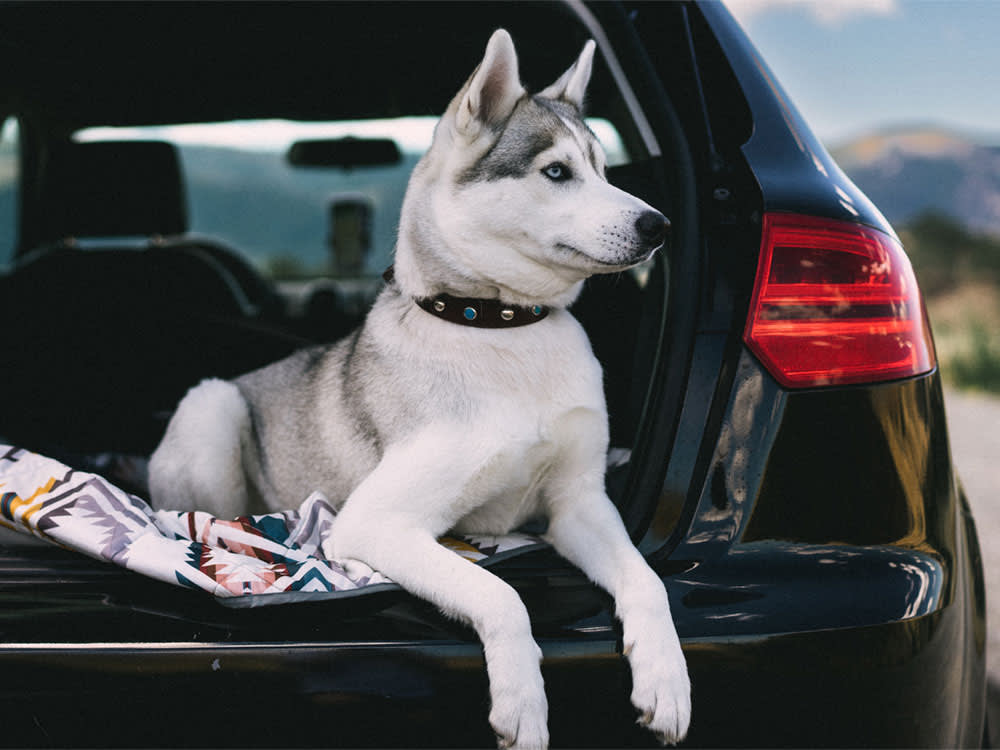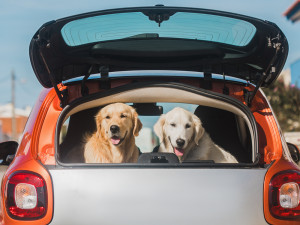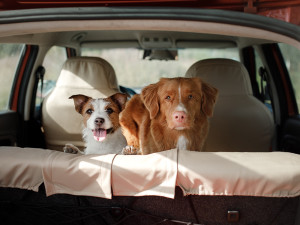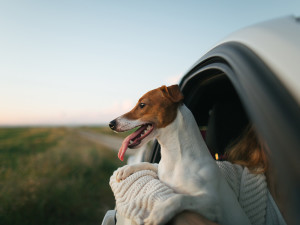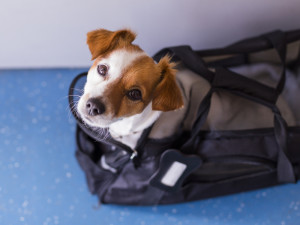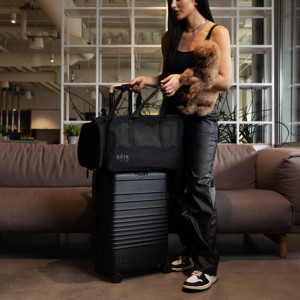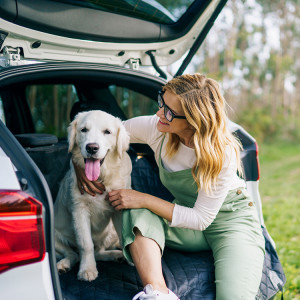How to Road Trip with Dogs
Here are a few tips for taking your dog on long-distance road trips.
Summer means warmer weather, vacations, and, of course, plenty of driving. I’ll admit that taking dogs along on long trips has its challenges — fur in your travel mug, for one. It also requires research to find accommodations and attractions that welcome them. But the joys of having your pup with you outweigh these minor inconveniences.
Dogs have enthusiasm for the smallest things; they have the right mindset for adventure and can teach you a thing or two about enjoying the moment. Plus, dogs require pit stops, and with each one, there’s an opportunity to explore places you might otherwise have passed by. And it’s not just the landscape that opens up under a pup’s scrutiny; people do, too. Dogs are the world’s best icebreakers. If you plan on making a long-distance car trek with your dog, here are a few tips to ensure everyone has a safe and happy vacation.
Trick question: All dogs are perfect! But find out which type is the best fit for you.
Remember that “dog-friendly” is relative.
It may take a little digging to determine if a hotel, inn, B&B, or condo is more than “dog-tolerant.” Special pet packages, amenities, a canine mascot, and websites with photos of dogs are good signs. A phone conversation with the front desk will also help you get a bead on the extent of their dog love. Be sure to ask about size and/or breed restrictions, extra fees, and rules, such as a prohibition on leaving dogs in your room.
Do your research.
It pays to know if your destination has special concerns, such as deer, sensitive wildlife, and areas that are restrictive towards dogs. You want to be prepared for the unexpected, so it’s a good idea to do a little advance work on identifying local veterinary services and emergency care — hopefully, they aren’t needed, but if they are, you’ll be glad to have done your homework.
How much do you spend on your pet per year?
Pack smart.
In addition to your pup’s regular gear, remember to pack a canine first-aid kit, grooming supplies, and an extra collar and leash. Travel with extra blankets and plenty of water. Also include any medications that your dog might need on the road, and remember that human medications like ibuprofen can be toxic to dogs. Don’t give your dog any medication without first consulting a veterinarian.
Remember to hydrate.
Keep water with you on those long car trips (as well as on any hikes or long walks) and make sure your dog takes regular drink breaks. Unfamiliar water may upset your pup’s stomach; bring water from home — or fill up on filtered water at a restaurant — to help prevent tummy troubles.
Make and carry a dog file.
It should include your dog’s vital info (vaccinations, medications, allergies, and health conditions) as well as a photo in case they go missing while you’re on the road. Some travelers keep this material in their car’s glove compartment in an envelope marked DOG INFO, so it’s easy to find in case of an accident. If you’re a tech type, load the records and photos on a small USB drive and attach it to your keychain.
Make sure your dog has proper identification.
Make sure that your dog wears their collar and tags at all times. If they become lost in an unfamiliar place, a tag and a microchip could be key to getting them back. Since time is of the essence, be sure to provide your own contact number and that of a reliable friend or relative as a backup. Also, if you haven’t had your dog microchipped, now would be a good time to do it.
Restrain your dog.
You wouldn’t let a person ride unrestrained in your car, and you shouldn’t let your dog, either. A harness seat belt or secured crate keeps a dog from moving around the vehicle and becoming a dangerous distraction, as well as potentially reducing injuries to both of you in case of an accident. If your dog is not used to wearing a seatbelt or traveling in a crate, take a few pre-trip practice runs before embarking on any long hauls.
Keep heads and ears inside the vehicle.
Your pup may love the sensation of wind whipping through their ears. But, what they won’t love is a piece of gravel hitting their face at 60 mph. Those little bits of road debris can turn into dangerous projectiles at high speeds. Make sure your dog can’t poke their head out the window and keep those rear windows locked so they can’t lower them by accident.
Be a good guest.
Make your friends and family thrilled that your dog joined the festivities by being considerate of all guests and ensuring that your dog is on their best behavior. Make your dog feel at home and safe by bringing along some extra gear — your dog’s favorite bowl and kibble, a familiar bed, and even a doggie gate. Reward hoteliers, restaurateurs, and shop owners who roll out the canine red carpet by following the rules; traveling with your own dog sheet, towel, and lint rollers; and spreading the word about good dog service.
Stay leashed.
When they’re not in the car, the leash goes on. Remember, your dog is in a strange place with lots of scary and exciting sounds and smells. Even the most well behaved dog can run off and become lost. Staying leashed is a small precaution that ensures you and your dog will be able to enjoy your vacation together.
Oh and don’t forget: Never, ever leave your dog unattended in the car. Even with the windows cracked, a car can quickly turn into a furnace on warm days.
